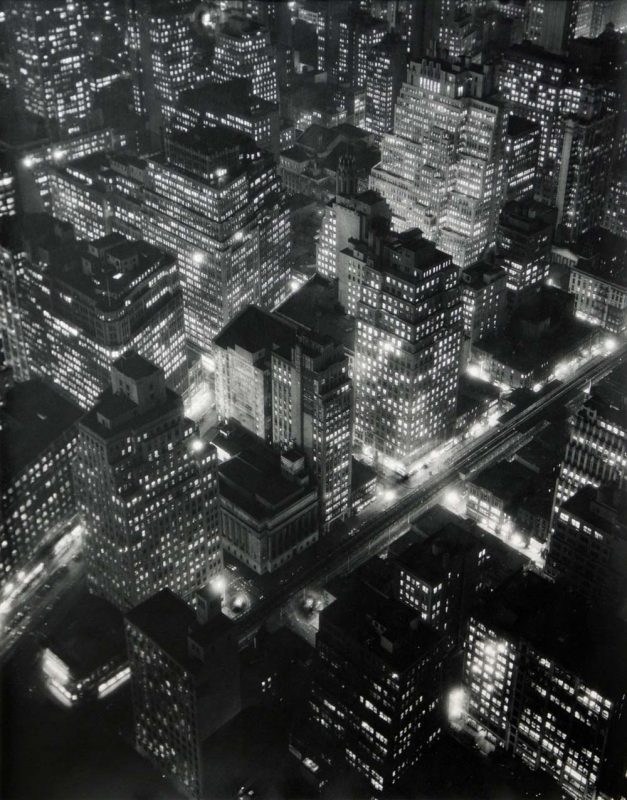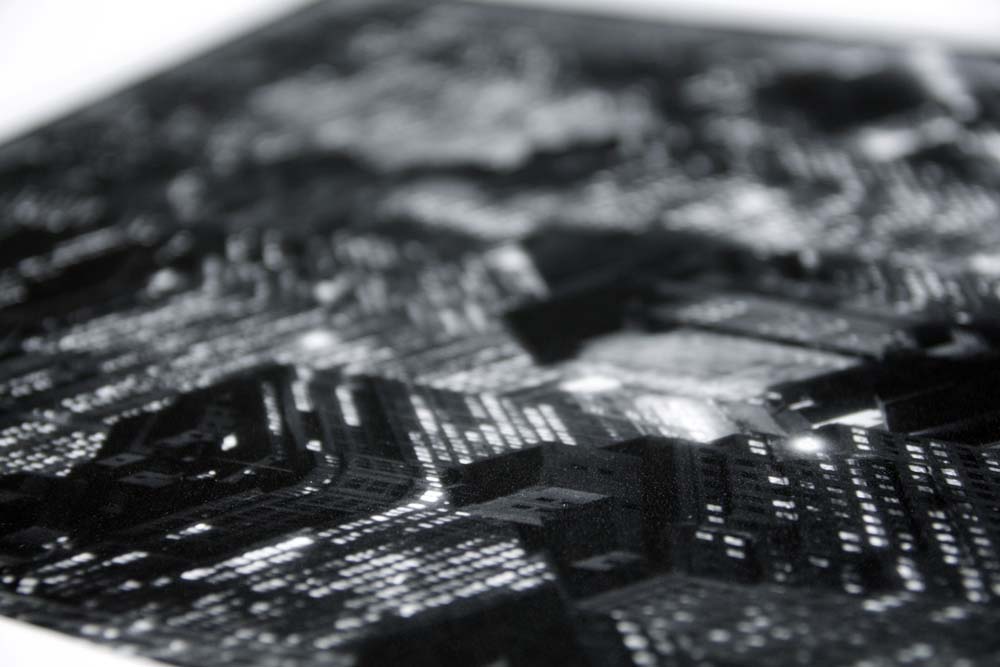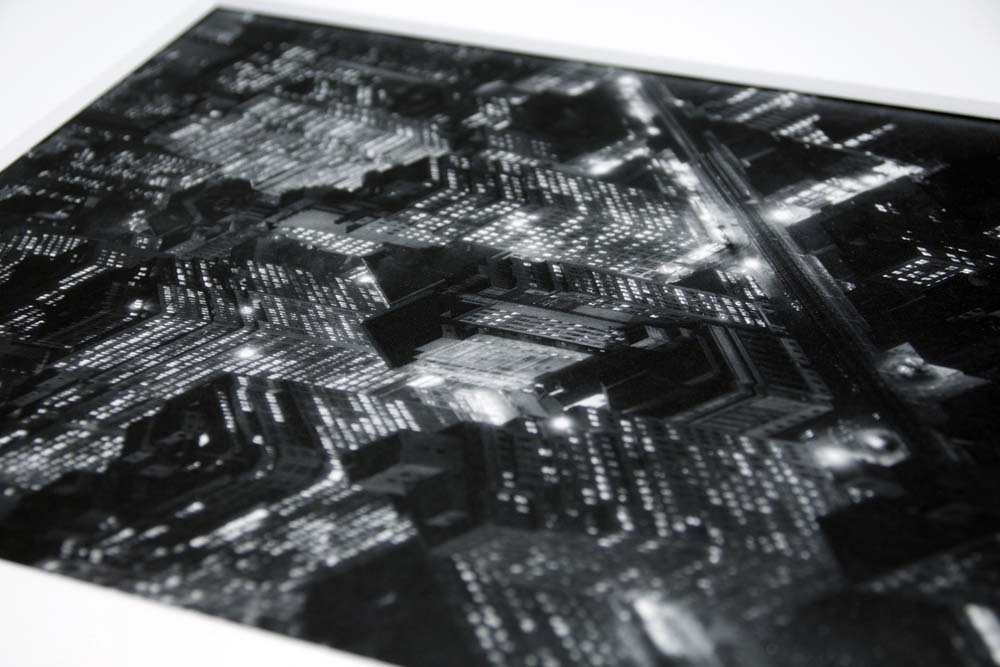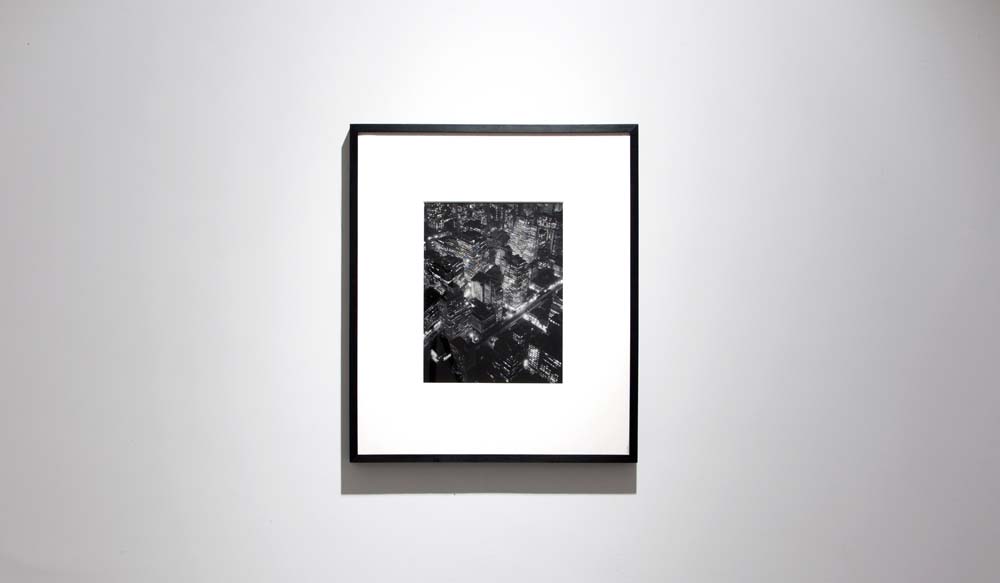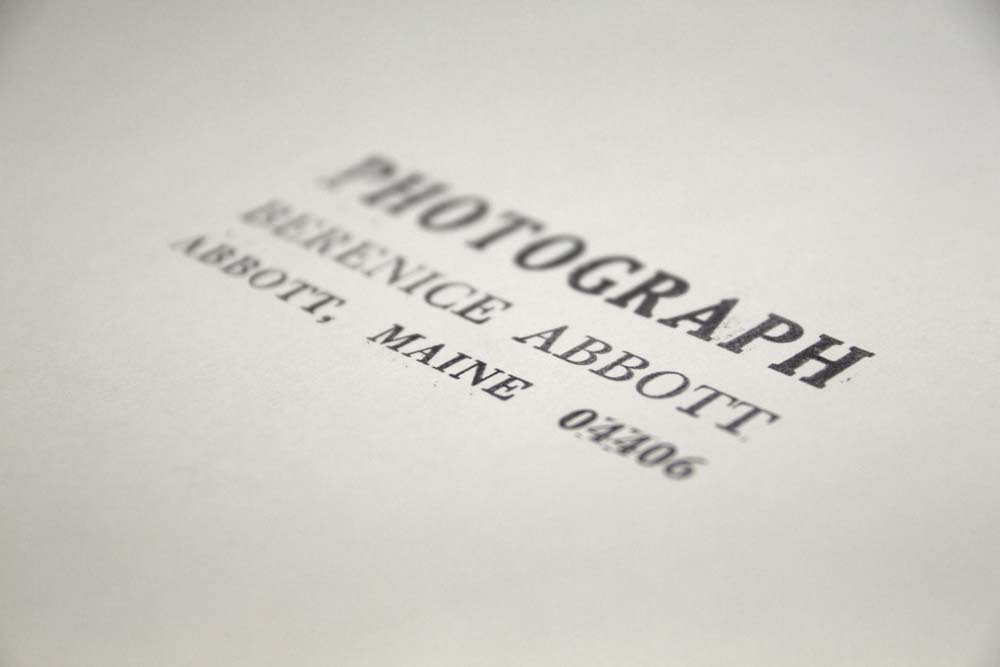Nightview, New York, 1932
BERENICE ABBOTT
Stamped with photographer's ink stamp on reverse of mount
Silver gelatin print, printed 1960s
Printed on 14 x 11 inch paper

Berenice Abbott arrived in New York in 1929, leaving her career as a portrait photographer in Paris. She found New York in the midst of its second great building boom but only months after her return, the stock market crashed and the United States began to spiral into the Great Depression. The urban sprawl of New York caught hold of Abbott’s imagination and she devoted herself to capturing the contrasts of the rapidly changing city. Rather than glorifying the technological advancement of the city through the depiction of skyscrapers and monumental construction projects, Abbott sought to expose the extreme contrasts of the city and the tensions that had evolved. She wanted to show the nineteenth and twentieth centuries colliding in a dizzying interplay of cultures.
In February 1935 Abbott applied to New York City’s Emergency Relief Bureau for funding for a project that would become known as ‘Changing New York’. In her proposal she said that ‘to photograph New York City means to seek to catch in the sensitive and delicate photographic emulsion the spirit of the metropolis, while remaining true to its essential fact, its hurrying tempo, its congested streets, the past jostling the future’. She conceptualised the project as a photographic ‘portrait’ of the city and worked with the same fastidious documentary precision as her contemporaries Walker Evans and Dorothea Lange, also employed under the auspices of the New Deal administration.
The historic significance and artistic merit of Abbott’s New York photographs from the 1930s has made them the work for which she is best remembered. The present photograph, Nightview, New York has become an iconic image of the city. Taken from a window on one of the top floors of the Empire State Building, Abbott wanted to capture the city in darkness before the office lights were turned off. Using an exposure time of fifteen minutes on her large format camera, the photograph captures the frenetic energy of the city in a formalist study of the geometric shapes created by the Manhattan skyscrapers.
The urban sprawl of New York caught hold of Abbott’s imagination and she devoted herself to capturing the contrasts of the rapidly changing city.
The image shows the influence of the formalism of the f/64 group, headed up by Edward Weston, Ansel Adams and Imogen Cunningham. It has subsequently become one of Abbott’s best-known compositions, as well as one of the most enduring images of New York.
The majority of collector’s prints for this image were made by Abbott in the 1980s. The present print was made earlier, in the 1960s, which makes it particularly desirable. It is in excellent condition, and has exceptional tone and clarity of image.
